|
Posted on 11/18/2003 12:02:05 AM PST by SAMWolf
|
|
 are acknowledged, affirmed and commemorated.
|

| Our Mission: The FReeper Foxhole is dedicated to Veterans of our Nation's military forces and to others who are affected in their relationships with Veterans. In the FReeper Foxhole, Veterans or their family members should feel free to address their specific circumstances or whatever issues concern them in an atmosphere of peace, understanding, brotherhood and support. The FReeper Foxhole hopes to share with it's readers an open forum where we can learn about and discuss military history, military news and other topics of concern or interest to our readers be they Veteran's, Current Duty or anyone interested in what we have to offer. If the Foxhole makes someone appreciate, even a little, what others have sacrificed for us, then it has accomplished one of it's missions. We hope the Foxhole in some small way helps us to remember and honor those who came before us.
|
|
THE AIRBORNE ASSAULT While the Utah Beach Invasion Force was still approaching the Transport Area, the first blows had already struck the enemy from the air. The intensive air bombardment of the invasion area had started about midnight, 5 June. At that time RAF bombers made intensive attacks on the known enemy batteries along the entire invasion coast. Shortly before H Hour medium bombers of the Ninth Air Force dropped several hundred tons of bombs on enemy defenses at Utah Beach in support of the seaborne assault. Between these bombings, however, came the still more telling attacks by airborne infantry.  Allied Air Assault Routes It was the largest use of airborne troops up to that time. Paratroop elements of the 82d and 101st Divisions, comprising 6 regiments, with the normal complement of parachute field artillery and engineers, numbering more than 13,000 men, were flown from bases in southern England to the Cotentin Peninsula in approximately 925 C-47's. An additional 4,000 men, consisting of glider infantry with supporting weapons and medical and signal units, were to arrive in 500 gliders later on D Day and on D plus 1 to reinforce the paratroops. Seaborne echelons were to join the divisions on D plus 1. To the parachute troops was assigned what was probably the most difficult task of the initial operation-a night jump behind enemy lines five hours before the coastal landings. At 2215 on D minus 1, 432 C-47's began taking off from 7 departure airdromes in England, with 6,600 paratroops of the 101st Airborne Division. They were scheduled to begin dropping at H minus s hours. At dawn (H minus 2 hours) they were to be reinforced by approximately 150 glider troops from 51 gliders, and at dusk (H plus 15 hours) by an additional 165 in 32 gliders. Preceding the main echelons of paratroops by half an hour were 20 pathfinder aircraft which had the mission of marking six drop zones (for both divisions) and one landing zone. Marking of the zones was not entirely successful, but all of the pathfinder teams carried out at least part of their missions.  Paratroop echelons approached the Cotentin from the west and made their landfall in the vicinity of les Pieux. Formations were tight until reaching the coast, but from the coast to the Merderet cloud banks loosened the formations, and east of the Merderet flak scattered them further. In general the division did not have a good drop, although better than that of the 82d Airborne Division. About 1,500 troops were either killed or captured and approximately 60 percent of the equipment dropped was lost when the bundles fell into swamps or into fields covered by enemy fire. Only a fraction of the division's organized strength could initially be employed on the planned missions, and many of the missions carried out were undertaken by mixed groups which did not correspond with original assignments. The fifty-one Waco gliders, carrying command personnel and antitank weapons, came in early on D-Day morning. This type of landing had never been attempted before in darkness. Many gliders were wrecked as they landed in the small Normandy fields and there as damage to equipment and loss of personnel, one of the casualties being Brig. Gen. Don F. Pratt (Assistant Commander, 101st Airborne Division), who was killed in landing. In general, however, losses were not excessive and the mission was a success. Later in the day, at 2100, the serial of thirty-two Horsa gliders-carrying command, communications, and medical personnel and equipment-suffered heavier losses in personnel and gliders because of the unsuitability of the small landing fields. Equipment suffered relatively little damage. A seaborne echelon of the division, including the 3 27th Glider Infantry, joined the division on D plus 1. The initial widespread dispersion of the 101st Division was not an unmixed evil. The Germans appear to have been confused by the scattered drops. For some time they were unable to estimate the magnitude of the invasion and, in consequence, reaction was slow and uncertain. The war diary of the German Seventh Army noted at 0130, 6 June, reports of Allied paratroop landings east and northwest of Caen, at St. Maricove, at Montebourg, on both sides of the Vire River, and on the east coast of the Cotentin Peninsula. Fighting was reported at le Ham. For several hours the German command was uncertain whether the landings represented a major action. At 0400 it was estimated that the American plan seemed to be to "tie off the Cotentin Peninsula at its narrowest point."  Uncertainty at the enemy command level seemed to have been duplicated among the subordinate units. It was generally the experience of the 101st Airborne Division, at least, that although the enemy defended freely with fire he was initially reluctant to move out of his prepared defenses to attack. When attacks were launched they were seldom pushed vigorously. Thus in some measure the enemy's confusion tended to offset that of the invaders and, by dint of considerable improvisation, the 101st was able to accomplish most of its initial missions. The plan of the 101st Airborne Division called for the seizure of the four inland exits-the western ends of causeways-from the inundated area west of Utah Beach between St. Martin-de-Varreville and Pouppeville. In the southern part of the division's sector two bridges across the Douve River, on the main highway northwest of Carentan and the railroad bridge to the west, were to be destroyed. In addition, the division was to seize and hold the la Barquette lock and establish two bridgeheads over the Douve at le Port northeast of Carentan. The sum of these missions thus provided for the clearing of the enemy's secondary beach defenses and the organization of the Corps' southern flank for defense and further exploitation. After being relieved in the beachhead area by the 4th Division, the 101st was to seize Carentan and establish contact with V Corps, fusing the Utah and Omaha beachheads. Thereafter the 101st Airborne Division was ordered to protect the southern flank of VII Corps east of the Merderet River. The division would be reinforced by the attachment of a company of tanks of the 70th Tank Battalion, the 65th Armored Field Artillery Battalion, and a troop of the 4th Cavalry Reconnaissance Squadron when these were landed by sea. The task of securing the two northern beach exits was assigned to the 502d Parachute Infantry, with the 377th Parachute Field Artillery Battalion. The 502d was to drop immediately to the west of Exits 3 and 4 in Drop Zone A. The 2d Battalion was to capture and destroy the coastal battery at St. Martin-de-Varreville as quickly as possible. The 3d Battalion was to support this operation, if necessary, and then secure Exits 3 and 4 so that the 4th Division could come up the causeways at H Hour. The 2d Battalion was to remain on the gun position as regimental reserve and establish contact with the 506th Parachute Infantry on its right. The 1st Battalion was to clean up a group of buildings, thought to be the German artillery garrison quarters, just west of St. Martin- de-Varreville. It was also to cover the northern flank of the regiment, establish contact with the 82d Airborne Division on the left, and cover the emplacing of the 377th Glider Field Artillery Battalion guns.  General Eisenhower addressing the 101st Airborne in England before the Normandy Invasion, 1944 The four serials of the 502d Parachute Infantry came in ten minutes apart. The 2d Battalion led with regimental headquarters, followed by the 3d, the 1st, and the artillery battalion. The 2d Battalion failed to land in Drop Zone A as planned. A large percentage of the men came down on the southern edge of Drop Zone C. Assembly, without landmarks and far from the designated assembly points, consumed most of the day, and the battalion as a unit took no part in the D-Day fighting. Lt. Col. Robert G. Cole, commanding the 3d Battalion, landed several hundred yards east of Ste. Mere-Eglise. Unable to orient himself, he moved toward Ste. Mere-Eglise, collecting a miscellaneous group of about thirty men from regimental headquarters, Company G of the 506th Parachute Infantry, and a few from the 82d Airborne Division. From Ste. Mere-Eglise the men back-tracked north and then northeast, heading for the two northern exits of the beach. On the way the group snowballed to about seventy-five men and made contact with a small enemy convoy. Several of the enemy were killed and ten taken prisoner. This was the only incident of the march.  Airborne Paratroopers beside their C-47 transport plane on the eve the D-Day invasion. Before the sun set on Normandy Beaches on D-Day only four men were still alive of the nineteen that parachuted onto hostile German held france. On nearing St. Martin-de-Varreville, a reconnaissance party was sent to the enemy coastal battery. It found that the position had been destroyed by bombing and was deserted. No heavy guns were found, although there was ammunition in the pits and, antiaircraft guns, including some multiple 20-mm. mounts. Colonel Cole then split his force to seize Exits 3 and 4 and dispatched a small group of men to seek contact with the 506th Parachute Infantry. At 0930, two hours after the defense was established at Exit 3, in the vicinity of Audouville-la-Hubert, the enemy began retreating across the causeway from the beach. Colonel Cole's men, without loss to themselves, killed 50 to 75 of the enemy, and at 1300 established contact with the 1st Battalion of the 8th Infantry (4th Division). By the end of the day 250 men had gathered under Colonel Cole. That night his battalion was ordered to assemble the next day in the vicinity of Blosville, south of Ste. Mere-Eglise, as regimental reserve. The 1st Battalion, 502d Parachute Infantry (Lt. Col. Patrick J. Cassidy), had a much stiffer fight for its D-Day objectives. Colonel Cassidy landed near St. Germain-de-Varreville in the center of the battalion's drop one and a mile from the first objective-the artillery garrison buildings designated as "WXYZ" in the plan. He gradually collected a small force, mostly from his own battalion, and after discovery of a road sign began moving toward the objective. Objective W, the house at the crossroads west of St. Martin-de-Varreville, was unoccupied. Colonel Cassidy set up his command post in the house and then checked the enemy gun position across the road. There he found a dozen men under Lt. Col. Steve A. Chappuis (commander of the 2d Battalion); Colonel Chappuis, though injured in the jump, had been able to reach his objective. He had decided to wait at the gun position for more of his men. Colonel Cassidy proceeded with his own mission. His plan was, first, to establish defenses at the St. Martin-de-Varreville intersection to prevent the enemy from moving east into the beach area, and then to clean out the XYZ buildings and set up a defensive line to the north. A patrol sent to check Exit 4 found both it and the causeway clear. The 3d Battalion, in the meantime, reported Exit 3 covered, and Colonel Cassidy, after relaying this information to the 4th Division, turned his attention to consolidating the battalion position.  Several groups from Company A assembled north of St. Martin-de- Varreville during the morning. Forty-five men were collected by Lt. W. A. Swanson and ordered to move to Foucarville to establish the right anchor of the battalion line with a series of road blocks. Lieutenant Swanson set up four blocks shortly after noon and within half an hour he trapped and largely destroyed a 4-vehicle enemy troop convoy moving east from Beuzeville-au-Plain. Despite this success, Company A's positions were not secure as they were dominated by the enemy on the hill to the northwest. The Germans, however, made no determined effort to break through, although a fire fight continued most of the day as the enemy probed at the road blocks without discovering their essential weakness. Meanwhile the fight at XY was carried on most of the day by a mixed group of men under Sergeant Summers, while Company C was held in reserve. It was not an easy task. Not until 1530 were the Germans driven Out of the last building, after its roof was fired with bazooka rounds. More than one hundred were killed or taken prisoner as they tried to escape. Another fifty had been killed or captured earlier in the fight.  General Anthony MacAuliffe talks to glider pilots June 5, 1944 The establishment of the western end of the battalion line was facilitated by the arrival in the area of Lt. Col. John H. Michaelis, regimental commander, with two hundred men. This left Colonel Cassidy free to move the 1st Battalion north and complete his D-Day mission. Company C was ordered to Beuzeville-au-Plain, while Company B reassembled in the artillery barracks area. Actually Beuzeville-au-Plain was not reached that night. Company C moved in a body north to St. Germain-de-Varreville and then west along a stream bed toward its objective. A little more than halfway the company split into three "platoons," no more than combat patrols in strength. Each of these platoons became involved separately with small enemy forces at the hamlet of Fournel, which the leading group had mistaken for Beuzeville-au-Plain. At dark the paratroopers withdrew, and a company line was established south of Fournel, facing northwest.  82nd Airborne Shoulder patch During the night the line was subjected to continuing enemy pressure from the west. To cope with this threat, Colonel Cassidy put Company B, which had moved north after reassembling, into the line on the left flank. As there was still a dangerous gap between Company C and the battalion's right flank held by Company A, Colonel Cassidy filled it temporarily with a few spare riflemen and asked Regiment for help. Regiment, however, had already decided to pass the 2d Battalion through the 1st on the following day, and therefore ordered Colonel Cassidy to withdraw and consolidate. Shortly before midnight the principal enemy threat was unexpectedly removed when the Germans on the hill opposing Company A hoisted a white flag. Bluffed into overestimating Company A's strength, chiefly by the increasing volume of mortar and machine-gun fire laid down by Lieutenant Swanson's men, eighty-seven Germans marched into the American lines. Another fifty, attempting to escape north, were shot down by American prisoners who had been freed by the surrender.
|
The SS Divisions got the better gear....then too..they did more *Dark work than the regular army.
Amazing too ..some of the leaders..Leibstandartes Sepp Dietrich was an absolute moron based on reports from his own....could'nt read a map or understand mech movement projection,
yet he was a Hitler fave..so he remained regardless.
There were other SS Division leaders who were *Death Angels...like Kurt Meyer,Paul Hausser.
Hitler stuffed ..what was it...3 SS Divisions for Kursk,
The Russians were beaten..if Hitler had just listened to his field commanders.
Kursk..a huge mistake that bled Hitlers Mech strength....which showed later at Normandy.
But too..the roads and rail net.
maybe here the Germans were doomed for sure..Hawker Typhoon meat.
Strange..the Germans held the lease[Normandy]..yet they did not think about logistical movement.
Cuz when they did move..they got the chop : )


Japanese TONE class CA, all turrets forward. The Japanese were very satisfied with this design, left all that space aft for scout floatplane operations. On the other hand, the Brits continually had problems with the NELSON class. A full 9 gun broadside salvo raised all sorts of havoc onboard from shock damage. I imagine the difference between the success of the two classes boiled down to the main gun size. 8" grouping like that was ok, 16" was not.
Finished! . . . that was a long one . . . and I ain't talkin 'bout my workday (ahhh quit your moaning). ;o)
Despite so many logistical setbacks these guys were the best-prepared generation to go to war willingly. They new their job and treated it like a job that had to be done. At least that seems IMHO to be the factor that overroad so many obstacles.
Again, great work folks.
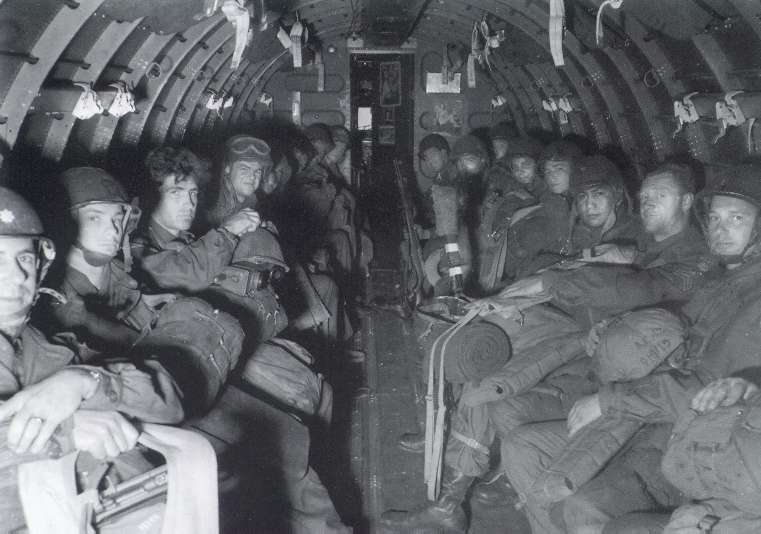
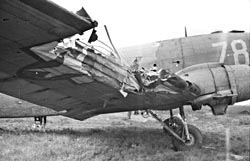
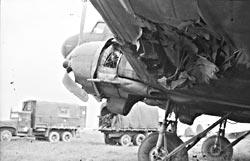
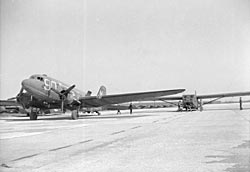
Hooking up gliders for double tow

The CG-4A Glider Cornish Pump and Mining Museum
Kent Street
Iron Mountain MI 49801
906-774-1086
During World War II, Americans produced the most formidable glider force in the world. More Waco CG-4A gliders were built at the Ford Motor Company plant in Kingsford MI than anywhere else in North America.
The gliders and allied airborne forces spearheaded all major invasions and operations of the war starting with the invasion of Normandy on June 6, 1944.

Almost all the gliders used in Normandy in June were lost.
The gliders lost at Normandy were replaced by Americans working furiously at home and by our IX Troop Carrier Command in England. They manufactured and assembled gliders by working as many people as possible in three shifts to meet the demand.






Carbine, Caliber .30, M1A1
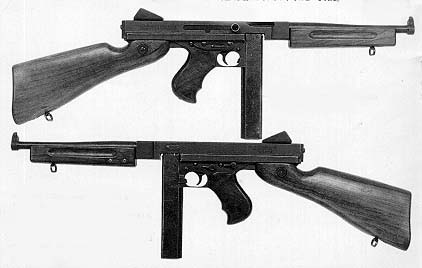
Thompson M1A1 with 30 round magazine
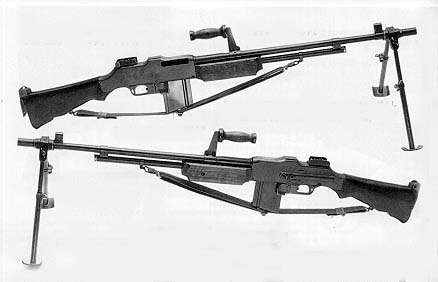
Browning Automatic Rifle (BAR) M1928

Model M1, 57mm, Anti-Tank Cannon, U.S. Army, WWII era
2.36 INCH ROCKET LAUNCHER M9A1 "BAZOOKA"
The 2.36 inch rocket launcher was developed at the beginning of World War II and distributed to units in 1942. The launcher was essentially a tube, about 60 inches long, with a rocket propelled shaped charge in the back. A magneto sends an electrical current that ignites the rocket motor and the projectile is propelled out the tube. Shown below are the two types of ammunition used. The upper projectile is the early war version of the shaped charge munition while the lower example is the later version.
Almost all the gliders used in Normandy in June were lost.
Landing by glider was more dangerous than jumping, yet Glider troops did not get "Jump Pay" until later. Either way, jumping or glider, it took a special breed of man to do what these young men did.
Disclaimer: Opinions posted on Free Republic are those of the individual posters and do not necessarily represent the opinion of Free Republic or its management. All materials posted herein are protected by copyright law and the exemption for fair use of copyrighted works.